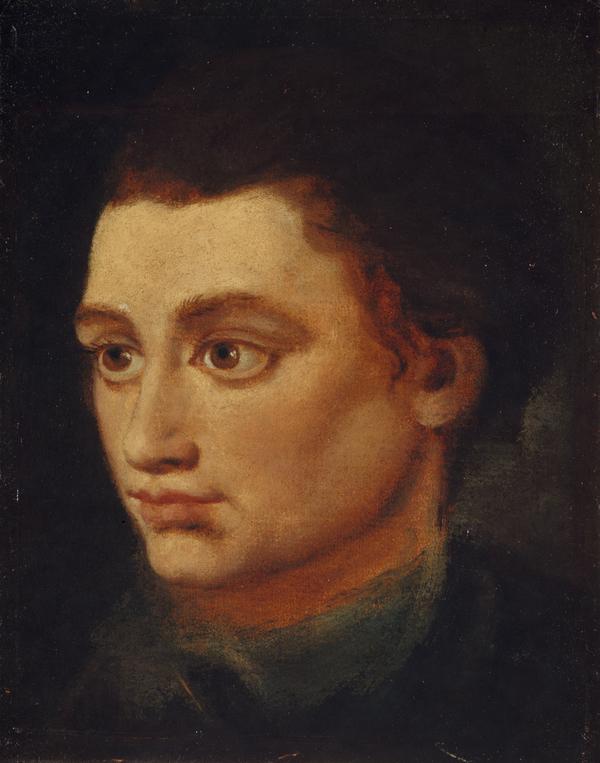The Scottish artist and writer John Byrne depicted his own likeness many times across his career. His self-portraits are diverse in style and approach, ranging from rigorous, almost academic studies to rapid caricatures; they are equally varied in mood and appearance, with his distinctive, chiselled features appearing in playful and theatrical images as well as in darker, more introspective portrayals. By its nature, self-portraiture is confessional and autobiographical but it also allows an artist to take on roles, declare allegiances and fashion identities. According to Byrne, his almost obsessive preoccupation with his own image was not about vanity:
‘I’m insatiably curious as to what we’re doing in this world … or, rather what I am doing in the world. I can’t think of a better or quicker way of getting to the “heart of the matter” … why we are on this earth.’
(John Byrne)
Byrne was born in Paisley and studied at the Glasgow School of Art. He is an acclaimed writer for the theatre and television and is well known as the author of the award-winning trilogy of plays The Slab Boys and the hugely successful television series Tutti Frutti, first broadcast in 1986. As an artist, Byrne has had an uneasy relationship with the Establishment. Over the years, he has positioned himself as an outsider, following his own highly individual path and refusing to settle on any single consistent style. At the outset of his career, he adopted the invented persona of ‘Patrick’, submitting works for exhibition in London in the guise of a retired labourer turned amateur painter. Byrne found it easier to gain attention working in the manner of an untrained artist rather than as a highly talented art school graduate. However, the clear, unaffected style of so-called naïve art suited his vision and he kept up the identity of Patrick for several years in a number of successful exhibitions.
This self-portrait was begun in 1971 when Byrne had just returned from a stay in California. The picture was originally larger, with a view of the sea at Malibu in the background, but it was cut down and reworked by Byrne before it was sent to an exhibition in Zagreb in 1973. Byrne replaced what was originally a driftwood chair with a wooden box and added the decorative flowers to the jacket, taken as he recalled ‘from scraps in my collection’. There is still an American feel to the self-portrait in the macho pose, the rock-star looks and the hippy jacket. Byrne’s alter ego Patrick has ‘signed’ the picture in the graffiti on the wooden box, and his naïve style remains evident in the slightly awkward proportions as well as in the attention lavished on every detail. Indeed, the painting is in some ways a homage to the most ‘naïve’ painter of all, the French artist Henri Rousseau. In a well-known visionary self-portrait dating from 1890, Rousseau painted himself standing against a backdrop of the skyline of Paris.
When Byrne’s self-portrait was acquired by the Scottish Arts Council in 1974, the artist mentioned the Rousseau as one of his sources of inspiration: ‘I wanted to produce something as solid as Rousseau’s Self-portrait, Grant Wood’s American Gothic and Dürer’s Self-portrait (the one with the corkscrew hair).’ Byrne’s work declares his affinity with ‘primitive’ visions yet it is composed with great sophistication and painted with spectacular skill. The result is one of the most compelling self-portraits in the collection, at once a serious artistic statement but also gently self-mocking and unpretentious.
This text was originally published in 100 Masterpieces: National Galleries of Scotland, Edinburgh, 2015.










